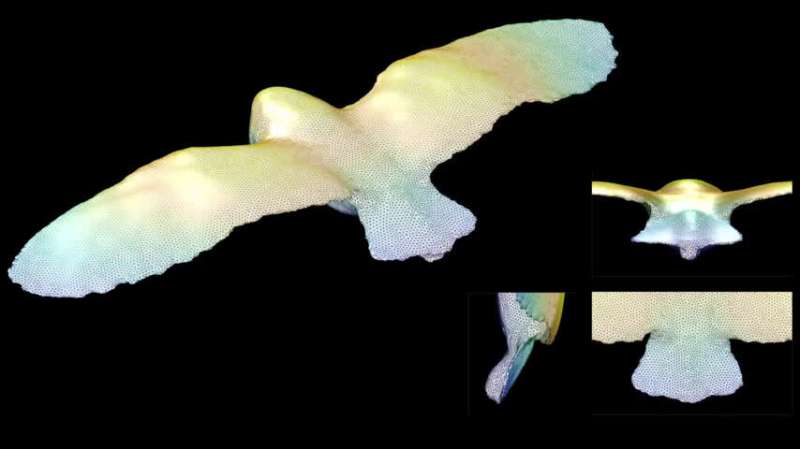February 10, 2022 report
Using an analytical drag model to learn more about use of the tail by owls in flight

A team of researchers from Dongguan University of Technology and the Royal Veterinary College has found that female barn owls use their tails in unexpected ways. In their paper published in the Journal of The Royal Society Interface, the group describes their analytical drag model using high-fidelity computational fluid dynamics (CFDs).
Barn owls are known for their ability to glide for long distances in the air. Gliding, as opposed to flapping, makes flight quiet and the birds less noticeable—features that make it easier to capture prey such as mice. But the role the tail plays in flying is not very well understood. The researchers note this is because of the large number of moving parts continually changing during flight and the inability to get birds to fly in preconfigured ways. In this new effort, the researchers took a new approach to studying the role of the tail in gliding owls.
The researchers observe that prior research shows that the tail is heavily involved in controlling stability and in directional assistance. It also provides some amount of lift, which is particularly relevant for soaring birds. To find out if the tail was being used in other ways, the researchers used high-speed cameras (stereo-photogrammetry) to capture the owls' movements as they flew around in specially built tunnels. They then used the footage to develop a CFD model to mimic the ways that the bird uses all of its body parts to fly. They next focused exclusively on the tail, running test scenarios involving 42 unique tail positions.
They found that the bird was using the tail to gain lift, as expected, which also helped to offset the bird's weight. But they also found that the owls used their tails to reduce drag, which was previously unknown. Surprised by their finding, the researchers filled the test tunnels with neutrally buoyant soap bubbles and watched as the owls flew through them, and the motion of the bubbles supported the model. The researchers suggest their findings could inform the design of small aircraft that rely on gliding.
More information: Jialei Song et al, Virtual manipulation of tail postures of a gliding barn owl ( Tyto alba ) demonstrates drag minimization when gliding, Journal of The Royal Society Interface (2022). DOI: 10.1098/rsif.2021.0710
Journal information: Journal of the Royal Society Interface
© 2022 Science X Network





















